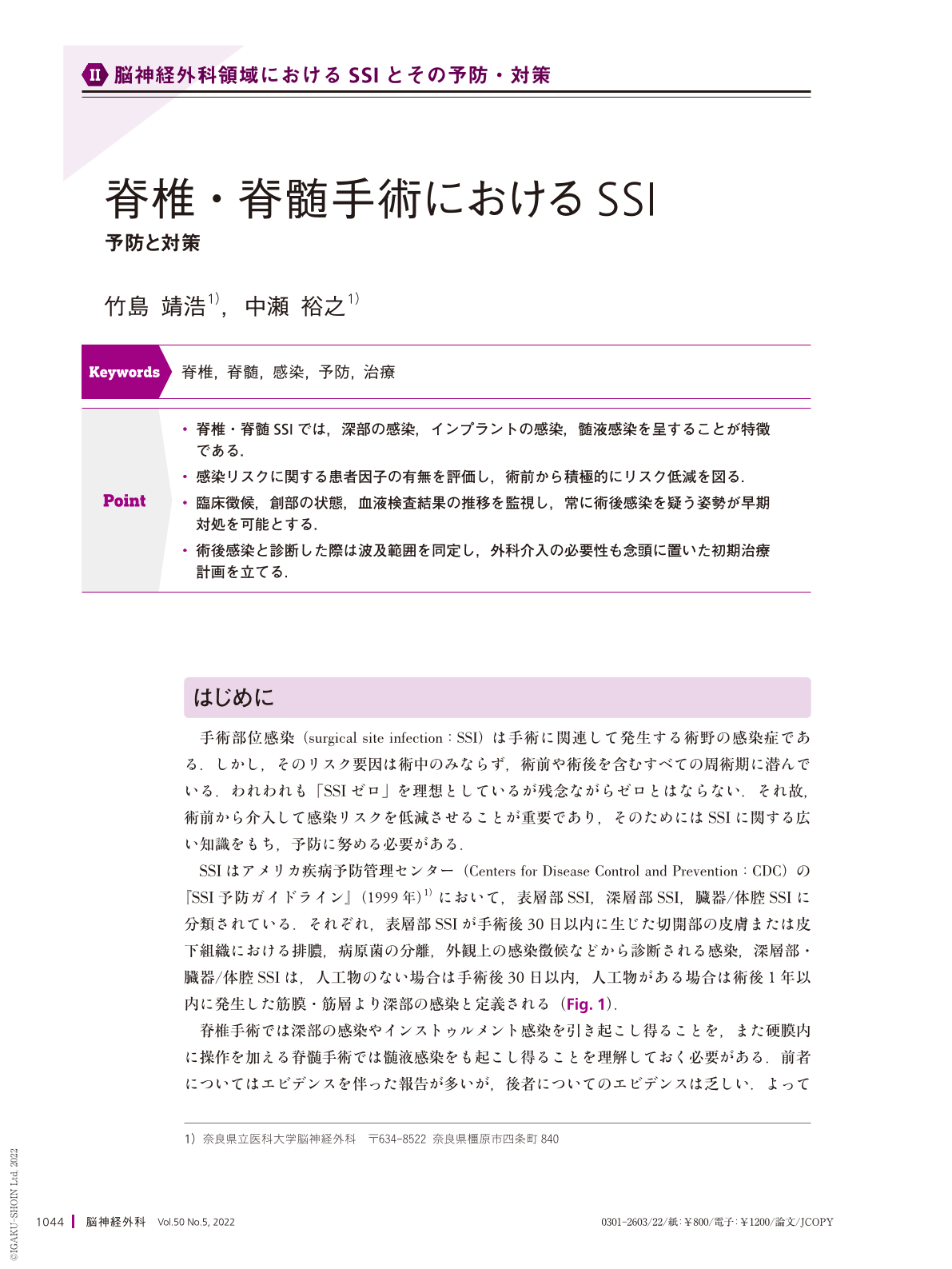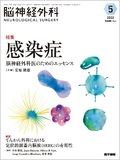Japanese
English
- 有料閲覧
- Abstract 文献概要
- 1ページ目 Look Inside
- 参考文献 Reference
Point
・脊椎・脊髄SSIでは,深部の感染,インプラントの感染,髄液感染を呈することが特徴である.
・感染リスクに関する患者因子の有無を評価し,術前から積極的にリスク低減を図る.
・臨床徴候,創部の状態,血液検査結果の推移を監視し,常に術後感染を疑う姿勢が早期対処を可能とする.
・術後感染と診断した際は波及範囲を同定し,外科介入の必要性も念頭に置いた初期治療計画を立てる.
Surgical site infection(SSI)is among the most serious complications of spinal surgery in terms of patient health status and clinical outcomes. The use of prophylactic antimicrobials does not eliminate SSIs. Risk factors for SSI exist during not only the intraoperative period, but also all perioperative periods. In addition to intraoperative surgical risk factors, patient-related factors such as age, nutritional status, diabetes, smoking, obesity, coexistent infections in a remote part of the body, and colonization with microorganisms have also been reported. Therefore, it is important to reduce the risk of SSIs even before surgery, which requires knowledge about SSIs and prevention efforts.
Spinal surgery can cause deep SSIs, instrumented infections, and meningitis resulting from cerebrospinal fluid infection. Spinal SSIs can be predicted by detecting changes in wound sites, pain and fever, and trends in hematological examination. However, special attention should be given to instrumented surgeries because of the subclinical nature of bacterial biofilm formation on the surface of implants. Therefore, it is important to aim for early detection and treatment of SSIs while reducing perioperative risks to decrease the potential for poor outcomes due to spinal SSIs.

Copyright © 2022, Igaku-Shoin Ltd. All rights reserved.


